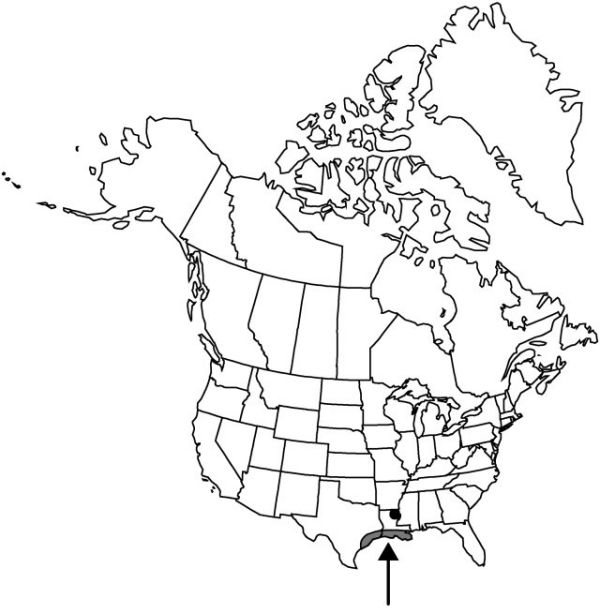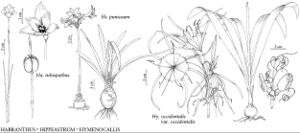Difference between revisions of "Hippeastrum puniceum"
Vilm. Blumengärtn. ed. 3, 1: 1033. 1895.
Basionym: Amaryllis punicea Lamarck in J. Lamarck et al., Encycl. 1: 122. 1783
FNA>Volume Importer |
FNA>Volume Importer |
Revision as of 19:32, 24 September 2019
Bulbs 6–10 cm diam. Leaves 6–8, appearing after flowering, 50 × 3–5 cm. Scape to 1 m. Inflorescences 2–4-flowered; bracts 5 cm. Flowers slightly zygomorphic; perianth reddish to salmon, with whitish midstripe on adaxial surface of each outer tepal, tube 3 cm; outer tepals lanceolate to subrhombic, 12 cm or more, apex acuminatenate. Capsules ellipsoid to ovoid, 2 cm. Seeds black, compressed-globose or -subglobose.
Phenology: Flowering spring–early summer.
Habitat: Disturbed sites and old gardens, spreading or persisting from cultivation
Elevation: 0–100 m
Distribution

La., Tex., Mexico, West Indies, Central America, South America.
Discussion
Hippeastrum puniceum is the “amaryllis” of commerce that is extensively cultivated outdoors in the southern United States and indoors elsewhere.
Selected References
None.
Lower Taxa
None.
